

Formatting a Research Paper in Word: Home
- Resources for Visually Impaired
This page will help you set up a Microsoft Word document to write an MLA or APA research paper. It includes keystroke commands where possible.
Keyboard shortcuts from Microsoft
Header for MLA Style
Insert header.
(ALT + N, H spacebar)
- To create the header, click on the Insert tab on the toolbar.
Page number
(Alt+N, N, U) , T (selects top of page from menu options), Enter , Right align (Ctrl+R), Type Last name and a space
- Click page number in the Header & Footer box. Choose Top of Page in the drop down menu, and select Plain Number 3.
- While your cursor is still on the page number, type your last name and a space.
Format Font to Times New Roman, size 12
Alt+A to select all font, Ctrl+D to open font dialog box, type Times, tab twice to get to size box, type 12, then Enter to close box and header.
- Highlight all text if needed, then on the Home tab, in the Font section, select Times New Roman, size 12.
To Close Header
(Alt+J, H, C)
- Click on Close Header & Footer or double-click on the body of the document
To Edit Header
(Alt+N, H, Alt+E)
- Open header & footer box or double click in header space
Header for APA Style
Running head.
In all caps, enter your running head, which is a short version of your title.
Page Set up
Format font to times new roman, size 12, double space lines.
Alt+K, arrow down to 2.0, enter
- On Home Tab, in the Paragraph section, choose 2.0 or Double for line spacing.
Paragraph Spacing
Alt+P, S, A, type the number zero, enter
- On Home Tab, in the Paragraph section, enter 0 (zero) for space before and after paragraphs.
Set Margins to 1 inch
Alt+P opens Page Layout, Alt+M online Margins, use arrows to select Normal Template. Enter.
- Under Layout Tab, open Margins and select Normal.
To Save this Format as the Default
Your information and title of paper, left align text (this should be the default).
- Under Home tab, in the Paragraph box, click Left Align icon
Your Information:
- Your first and last name <Enter>
- Your Instructor's name <Enter>
- Class name and course number <Enter>
- Date in format day, month, year <Enter>
Title of Paper
Center Align Text using Ctrl+C
Type the title of your paper, capitalizing the first letter of the of the first word and then the first letter of every word except conjunctions, prepositions, and articles. <Enter>
Note: You will need to left align text (Ctrl+L) before beginning body of the paper.
Body of Text
Make sure you have already completed the Page Set up.
If your preceding line was center justified, left align the text with Ctrl+L or using the Left Align icon on the toolbar.
Indent first line of paragraphs
You can tab to indent the first line of the paragraphs OR
Alt+O, P to open paragraph dialogue box, Alt+S to chose Special indentation. From dropdown, select First Line. Enter.
- On Home Tab, in the Paragraph section, under Indentation, in Special, use dropdown to select First Line.
Indenting block quotations
- (Alt+P, I, L) type .5 to indent by 1/2 inch. <enter> Or, with text highlighted, click the Increase indent button in the Paragraph settings section of the Home or Layout tab.
- Type your block quotation.
- To cancel indenting the block quotation, change the indent back to 0 using (Alt+P, I, L), 0. <enter> OR click the decrease indent to return back to the left margin.
Works Cited or References List
Start a new page.
- On the Insert tab, in the Pages section, slick on the Page Break icon
Center the title of the section
Ctrl+E, type "Works Cited" for MLA or "References" for APA, <enter> (return to Left alignment with Ctrl+L)
- On the Home Tab, in the Paragraph section, click the Center Align icon
- Type Works Cited for MLA or References for APA
- Return to Left Alignment using the Left Align icon
Format page for hanging indent
Alt+H, P, G opens paragraph dialog box, Tab to Special Indent, Arrow down to Hanging indent, <enter>
- On Home Tab, in the Paragraph section, under Indentation, in Special, use dropdown to select Hanging Indent <OK>
Alphabetize your Works Cited
This feature enables you to quickly alphabetize your works cited section. However, be aware that it does not ignore citations starting with A, An, or The, as you should according to MLA and APA style. Therefore, if any of your citations start with these words, you will need to manually move them into place.
- Select the text you want to sort.
- On the Home tab, in the Paragraph section, click the Alphabetize icon.
Preformatted Word Documents
- MLA Document Formatted This Word document is formatted in MLA style. Download this document then replace the text with your own text.
- APA Document Formatted Word document in APA format, including a cover page, was adapted from a document from Evergreen Valley College. Download this paper and replace the text with your own.
- Next: Resources for Visually Impaired >>
- Last Updated: Jul 14, 2023 9:56 AM
- URL: https://research.library.gsu.edu/format

APA Style (7th ed.)
- Cite: Why? When?
- Book, eBook, Dissertation
- Article or Report
- Business Sources
- Artificial Intelligence (AI) Tools
- In-Text Citation
- Format Your Paper
Format Your Paper
Download and use the editable templates for student papers below: .
- APA 7th ed. Template Document This is an APA format template document in Google Docs. Click on the link -- it will ask for you to make a new copy of the document, which you can save in your own Google Drive with your preferred privacy settings.
- APA 7th ed. Template Document A Microsoft Word document formatted correctly according to APA 7th edition.
- APA 7th ed. Annotated Bibliography template A Microsoft Word document formatted correctly for an annotated bibliography.
Or, view the directions for specific sections below:
Order of sections (section 2.17).
- Title page including Title, Author, University and Department, Class, Instructor, and Date
- Body (including introduction, literature review or background, discussion, and conclusion)
- Appendices (including tables & figures)
Margins & Page Numbers (sections 2.22-2.24)
- 1 inch at top, bottom, and both sides
- Left aligned paragraphs and leave the right edge ragged (not "right justified")
- Indent first line of each paragraph 1/2 inch from left margin
- Use page numbers, including on the title page, 1/2 inch from top and flush with right margin
Text Format (section 2.19)
- Times New Roman, 12 point
- Calibri, 11 point
- Arial, 11 point
- Lucinda Sans Unicode, 10 point
- Georgia, 11 point
- Double-space and align text to the left
- Use active voice
- Don't overuse technical jargon
- No periods after a web address or DOI in the References list.
Tables and Figures In-Text (chapter 7)
- Label tables and figures numerically (ex. Table 1)
- Give each table column a heading and use separating lines only when necessary
- Design the table and figure so that it can be understood on its own, i.e. it does not require reference to the surrounding text to understand it
- Notes go below tables and figures
Title Page (section 2.3)
- Include the title, your name, the class name , and the college's name
- Title should be 12 words or less and summarize the paper's main idea
- No periods or abbreviations
- Do not italicize or underline
- No quotation marks, all capital letters, or bold
- Center horizontally in upper half of the page
Body (section 2.11)
- Align the text to the left with a 1/2-inch left indent on the first line
- Double-space
- As long as there is no Abstract, at the top of the first page, type the title of the paper, centered, in bold , and in Sentence Case Capitalization
- Usually, include sections like these: introduction, literature review or background, discussion, and conclusion -- but the specific organization will depend on the paper type
- Spell out long organization names and add the abbreviation in parenthesis, then just use the abbreviation
- Spell out numbers one through nine and use a number for 10 or more
- Use a number for units of measurement, in tables, to represent statistical or math functions, and dates or times
Headings (section 2.26-2.27)
- Level 1: Center, bold , Title Case
- Level 2: Align left, bold , Title Case
- Level 3: Alight left, bold italics , Title Case
- Level 4: Indented 1/2", bold , Title Case, end with a period. Follow with text.
- Level 5: Indented 1/2", bold italics , Title Case, end with a period. Follow with text.

Quotations (sections 8.26-8.33)
- Include short quotations (40 words or less) in-text with quotation marks
- For quotes more than 40 words, indent the entire quote a half inch from the left margin and double-space it with no quotation marks
- When quoting two or more paragraphs from an original source, indent the first line of each paragraph a half inch from the left margin
- Use ellipsis (...) when omitting sections from a quote and use four periods (....) if omitting the end section of a quote
References (section 2.12)
Begins on a new page following the text of your paper and includes complete citations for the resources you've used in your writing.
- References should be centered and bolded at the top of a new page
- Double-space and use hanging indents (where the first line is on the left margin and the following lines are indented a half inch from the left)
- List authors' last name first followed by the first and middle initials (ex. Skinner, B. F.)
- Alphabetize the list by the first author's last name of of each citation (see sections 9.44-9.49)
- Capitalize only the first word, the first after a colon or em dash, and proper nouns
- Don't capitalize the second word of a hyphenated compound
- No quotation marks around titles of articles
Appendices with Tables, Figures, & Illustrations (section 2.14, and chapter 7)
- Include appendices only to help the reader understand, evaluate, or replicate the study or argument
- Put each appendix on a separate page and align left
- For text, do not indent the first paragraph, but do indent the rest
- If you have only one appendix, label it "Appendix"
- If you have two or more appendices, label them "Appendix A", "Appendix B" and so forth as they appear in the body of your paper
- Label tables and figures numerically (ex. Table 1, or Table B1 and Table B2 if Appendix B has two tables) and describe them within the text of the appendix
- Notes go below tables and figures (see samples on p. 210-226)
Annotated Bibliography
Double-space the entire bibliography. give each entry a hanging indent. in the following annotation, indent the entire paragraph a half inch from the left margin and give the first line of each paragraph a half inch indent. see the template document at the top of this page..
- Check with your professor for the length of the annotation and which elements you should evaluate.
These elements are optional, if your professor or field requires them, but they are not required for student papers:
Abstract (section 2.9).
- Abstract gets its own page
- Center "Abstract" heading and do not indent the first line of the text
- Summarize the main points and purpose of the paper in 150-250 words maximum
- Define abbreviations and acronyms used in the paper
Running Head (section 2.8 )
- Shorten title to 50 characters or less (counting spaces and punctuation) for the running head
- In the top margin, the running head is aligned left, with the page number aligned on the right
- On every page, put (without the brackets): [SHORTENED TITLE OF YOUR PAPER IN ALL CAPS] [page number]
More questions? Check out the authoritative source: APA style blog
- << Previous: In-Text Citation
- Last Updated: Mar 7, 2024 2:29 PM
- URL: https://libguides.uww.edu/apa
- Research a paper Video
- Write an equation or formula Video

Research a paper

Researcher in Word helps you research topics, find reliable sources, and add content with citations all within Word.
Note: Researcher for Word is only available if you have a Microsoft 365 subscription in the following languages: English, French, Italian, German, Spanish, and Japanese.
Research and add content with citations
Researcher uses Bing to pull in the appropriate content from the web and provide structured, safe and credible information.
Select Reference > Researcher .

In the search box, type a keyword for the topic you're researching, and press Enter.
Choose a topic in the Results pane.
Or, select the plus sign in the upper right hand corner of on any result to begin an outline, add the result as a topic heading, and save a link to the result in a comment.
Explore the text in the Results pane and select one of the following:
Add - to add only text to your document.
Add and Cite - to add text and also include a citation for the source.
See all images - to open the image gallery. Choose the plus sign to add the image to your document.
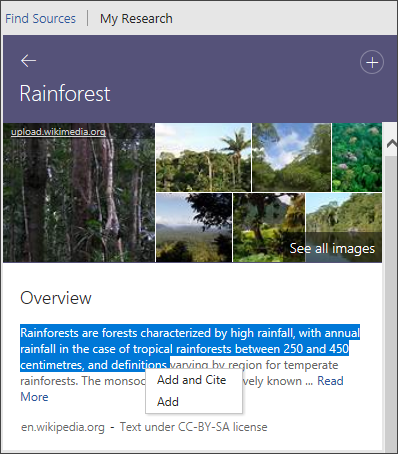
After you add text or image, you are prompted to update your bibliography. Select Update to automatically create or update your existing bibliography.
Edit citations
Select the citation and select Edit Citation from the drop-down..

Create a bibliography
Editing citations

Need more help?
Want more options.
Explore subscription benefits, browse training courses, learn how to secure your device, and more.

Microsoft 365 subscription benefits

Microsoft 365 training

Microsoft security

Accessibility center
Communities help you ask and answer questions, give feedback, and hear from experts with rich knowledge.

Ask the Microsoft Community

Microsoft Tech Community

Windows Insiders
Microsoft 365 Insiders
Was this information helpful?
Thank you for your feedback.
- Privacy Policy
Buy Me a Coffee

Home » Research Paper Format – Types, Examples and Templates
Research Paper Format – Types, Examples and Templates
Table of Contents

Research paper format is an essential aspect of academic writing that plays a crucial role in the communication of research findings . The format of a research paper depends on various factors such as the discipline, style guide, and purpose of the research. It includes guidelines for the structure, citation style, referencing , and other elements of the paper that contribute to its overall presentation and coherence. Adhering to the appropriate research paper format is vital for ensuring that the research is accurately and effectively communicated to the intended audience. In this era of information, it is essential to understand the different research paper formats and their guidelines to communicate research effectively, accurately, and with the required level of detail. This post aims to provide an overview of some of the common research paper formats used in academic writing.
Research Paper Formats
Research Paper Formats are as follows:
- APA (American Psychological Association) format
- MLA (Modern Language Association) format
- Chicago/Turabian style
- IEEE (Institute of Electrical and Electronics Engineers) format
- AMA (American Medical Association) style
- Harvard style
- Vancouver style
- ACS (American Chemical Society) style
- ASA (American Sociological Association) style
- APSA (American Political Science Association) style
APA (American Psychological Association) Format
Here is a general APA format for a research paper:
- Title Page: The title page should include the title of your paper, your name, and your institutional affiliation. It should also include a running head, which is a shortened version of the title, and a page number in the upper right-hand corner.
- Abstract : The abstract is a brief summary of your paper, typically 150-250 words. It should include the purpose of your research, the main findings, and any implications or conclusions that can be drawn.
- Introduction: The introduction should provide background information on your topic, state the purpose of your research, and present your research question or hypothesis. It should also include a brief literature review that discusses previous research on your topic.
- Methods: The methods section should describe the procedures you used to collect and analyze your data. It should include information on the participants, the materials and instruments used, and the statistical analyses performed.
- Results: The results section should present the findings of your research in a clear and concise manner. Use tables and figures to help illustrate your results.
- Discussion : The discussion section should interpret your results and relate them back to your research question or hypothesis. It should also discuss the implications of your findings and any limitations of your study.
- References : The references section should include a list of all sources cited in your paper. Follow APA formatting guidelines for your citations and references.
Some additional tips for formatting your APA research paper:
- Use 12-point Times New Roman font throughout the paper.
- Double-space all text, including the references.
- Use 1-inch margins on all sides of the page.
- Indent the first line of each paragraph by 0.5 inches.
- Use a hanging indent for the references (the first line should be flush with the left margin, and all subsequent lines should be indented).
- Number all pages, including the title page and references page, in the upper right-hand corner.
APA Research Paper Format Template
APA Research Paper Format Template is as follows:
Title Page:
- Title of the paper
- Author’s name
- Institutional affiliation
- A brief summary of the main points of the paper, including the research question, methods, findings, and conclusions. The abstract should be no more than 250 words.
Introduction:
- Background information on the topic of the research paper
- Research question or hypothesis
- Significance of the study
- Overview of the research methods and design
- Brief summary of the main findings
- Participants: description of the sample population, including the number of participants and their characteristics (age, gender, ethnicity, etc.)
- Materials: description of any materials used in the study (e.g., survey questions, experimental apparatus)
- Procedure: detailed description of the steps taken to conduct the study
- Presentation of the findings of the study, including statistical analyses if applicable
- Tables and figures may be included to illustrate the results
Discussion:
- Interpretation of the results in light of the research question and hypothesis
- Implications of the study for the field
- Limitations of the study
- Suggestions for future research
References:
- A list of all sources cited in the paper, in APA format
Formatting guidelines:
- Double-spaced
- 12-point font (Times New Roman or Arial)
- 1-inch margins on all sides
- Page numbers in the top right corner
- Headings and subheadings should be used to organize the paper
- The first line of each paragraph should be indented
- Quotations of 40 or more words should be set off in a block quote with no quotation marks
- In-text citations should include the author’s last name and year of publication (e.g., Smith, 2019)
APA Research Paper Format Example
APA Research Paper Format Example is as follows:
The Effects of Social Media on Mental Health
University of XYZ
This study examines the relationship between social media use and mental health among college students. Data was collected through a survey of 500 students at the University of XYZ. Results suggest that social media use is significantly related to symptoms of depression and anxiety, and that the negative effects of social media are greater among frequent users.
Social media has become an increasingly important aspect of modern life, especially among young adults. While social media can have many positive effects, such as connecting people across distances and sharing information, there is growing concern about its impact on mental health. This study aims to examine the relationship between social media use and mental health among college students.
Participants: Participants were 500 college students at the University of XYZ, recruited through online advertisements and flyers posted on campus. Participants ranged in age from 18 to 25, with a mean age of 20.5 years. The sample was 60% female, 40% male, and 5% identified as non-binary or gender non-conforming.
Data was collected through an online survey administered through Qualtrics. The survey consisted of several measures, including the Patient Health Questionnaire-9 (PHQ-9) for depression symptoms, the Generalized Anxiety Disorder-7 (GAD-7) for anxiety symptoms, and questions about social media use.
Procedure :
Participants were asked to complete the online survey at their convenience. The survey took approximately 20-30 minutes to complete. Data was analyzed using descriptive statistics, correlations, and multiple regression analysis.
Results indicated that social media use was significantly related to symptoms of depression (r = .32, p < .001) and anxiety (r = .29, p < .001). Regression analysis indicated that frequency of social media use was a significant predictor of both depression symptoms (β = .24, p < .001) and anxiety symptoms (β = .20, p < .001), even when controlling for age, gender, and other relevant factors.
The results of this study suggest that social media use is associated with symptoms of depression and anxiety among college students. The negative effects of social media are greater among frequent users. These findings have important implications for mental health professionals and educators, who should consider addressing the potential negative effects of social media use in their work with young adults.
References :
References should be listed in alphabetical order according to the author’s last name. For example:
- Chou, H. T. G., & Edge, N. (2012). “They are happier and having better lives than I am”: The impact of using Facebook on perceptions of others’ lives. Cyberpsychology, Behavior, and Social Networking, 15(2), 117-121.
- Twenge, J. M., Joiner, T. E., Rogers, M. L., & Martin, G. N. (2018). Increases in depressive symptoms, suicide-related outcomes, and suicide rates among U.S. adolescents after 2010 and links to increased new media screen time. Clinical Psychological Science, 6(1), 3-17.
Note: This is just a sample Example do not use this in your assignment.
MLA (Modern Language Association) Format
MLA (Modern Language Association) Format is as follows:
- Page Layout : Use 8.5 x 11-inch white paper, with 1-inch margins on all sides. The font should be 12-point Times New Roman or a similar serif font.
- Heading and Title : The first page of your research paper should include a heading and a title. The heading should include your name, your instructor’s name, the course title, and the date. The title should be centered and in title case (capitalizing the first letter of each important word).
- In-Text Citations : Use parenthetical citations to indicate the source of your information. The citation should include the author’s last name and the page number(s) of the source. For example: (Smith 23).
- Works Cited Page : At the end of your paper, include a Works Cited page that lists all the sources you used in your research. Each entry should include the author’s name, the title of the work, the publication information, and the medium of publication.
- Formatting Quotations : Use double quotation marks for short quotations and block quotations for longer quotations. Indent the entire quotation five spaces from the left margin.
- Formatting the Body : Use a clear and readable font and double-space your text throughout. The first line of each paragraph should be indented one-half inch from the left margin.
MLA Research Paper Template
MLA Research Paper Format Template is as follows:
- Use 8.5 x 11 inch white paper.
- Use a 12-point font, such as Times New Roman.
- Use double-spacing throughout the entire paper, including the title page and works cited page.
- Set the margins to 1 inch on all sides.
- Use page numbers in the upper right corner, beginning with the first page of text.
- Include a centered title for the research paper, using title case (capitalizing the first letter of each important word).
- Include your name, instructor’s name, course name, and date in the upper left corner, double-spaced.
In-Text Citations
- When quoting or paraphrasing information from sources, include an in-text citation within the text of your paper.
- Use the author’s last name and the page number in parentheses at the end of the sentence, before the punctuation mark.
- If the author’s name is mentioned in the sentence, only include the page number in parentheses.
Works Cited Page
- List all sources cited in alphabetical order by the author’s last name.
- Each entry should include the author’s name, title of the work, publication information, and medium of publication.
- Use italics for book and journal titles, and quotation marks for article and chapter titles.
- For online sources, include the date of access and the URL.
Here is an example of how the first page of a research paper in MLA format should look:
Headings and Subheadings
- Use headings and subheadings to organize your paper and make it easier to read.
- Use numerals to number your headings and subheadings (e.g. 1, 2, 3), and capitalize the first letter of each word.
- The main heading should be centered and in boldface type, while subheadings should be left-aligned and in italics.
- Use only one space after each period or punctuation mark.
- Use quotation marks to indicate direct quotes from a source.
- If the quote is more than four lines, format it as a block quote, indented one inch from the left margin and without quotation marks.
- Use ellipses (…) to indicate omitted words from a quote, and brackets ([…]) to indicate added words.
Works Cited Examples
- Book: Last Name, First Name. Title of Book. Publisher, Publication Year.
- Journal Article: Last Name, First Name. “Title of Article.” Title of Journal, volume number, issue number, publication date, page numbers.
- Website: Last Name, First Name. “Title of Webpage.” Title of Website, publication date, URL. Accessed date.
Here is an example of how a works cited entry for a book should look:
Smith, John. The Art of Writing Research Papers. Penguin, 2021.
MLA Research Paper Example
MLA Research Paper Format Example is as follows:
Your Professor’s Name
Course Name and Number
Date (in Day Month Year format)
Word Count (not including title page or Works Cited)
Title: The Impact of Video Games on Aggression Levels
Video games have become a popular form of entertainment among people of all ages. However, the impact of video games on aggression levels has been a subject of debate among scholars and researchers. While some argue that video games promote aggression and violent behavior, others argue that there is no clear link between video games and aggression levels. This research paper aims to explore the impact of video games on aggression levels among young adults.
Background:
The debate on the impact of video games on aggression levels has been ongoing for several years. According to the American Psychological Association, exposure to violent media, including video games, can increase aggression levels in children and adolescents. However, some researchers argue that there is no clear evidence to support this claim. Several studies have been conducted to examine the impact of video games on aggression levels, but the results have been mixed.
Methodology:
This research paper used a quantitative research approach to examine the impact of video games on aggression levels among young adults. A sample of 100 young adults between the ages of 18 and 25 was selected for the study. The participants were asked to complete a questionnaire that measured their aggression levels and their video game habits.
The results of the study showed that there was a significant correlation between video game habits and aggression levels among young adults. The participants who reported playing violent video games for more than 5 hours per week had higher aggression levels than those who played less than 5 hours per week. The study also found that male participants were more likely to play violent video games and had higher aggression levels than female participants.
The findings of this study support the claim that video games can increase aggression levels among young adults. However, it is important to note that the study only examined the impact of video games on aggression levels and did not take into account other factors that may contribute to aggressive behavior. It is also important to note that not all video games promote violence and aggression, and some games may have a positive impact on cognitive and social skills.
Conclusion :
In conclusion, this research paper provides evidence to support the claim that video games can increase aggression levels among young adults. However, it is important to conduct further research to examine the impact of video games on other aspects of behavior and to explore the potential benefits of video games. Parents and educators should be aware of the potential impact of video games on aggression levels and should encourage young adults to engage in a variety of activities that promote cognitive and social skills.
Works Cited:
- American Psychological Association. (2017). Violent Video Games: Myths, Facts, and Unanswered Questions. Retrieved from https://www.apa.org/news/press/releases/2017/08/violent-video-games
- Ferguson, C. J. (2015). Do Angry Birds make for angry children? A meta-analysis of video game influences on children’s and adolescents’ aggression, mental health, prosocial behavior, and academic performance. Perspectives on Psychological Science, 10(5), 646-666.
- Gentile, D. A., Swing, E. L., Lim, C. G., & Khoo, A. (2012). Video game playing, attention problems, and impulsiveness: Evidence of bidirectional causality. Psychology of Popular Media Culture, 1(1), 62-70.
- Greitemeyer, T. (2014). Effects of prosocial video games on prosocial behavior. Journal of Personality and Social Psychology, 106(4), 530-548.
Chicago/Turabian Style
Chicago/Turabian Formate is as follows:
- Margins : Use 1-inch margins on all sides of the paper.
- Font : Use a readable font such as Times New Roman or Arial, and use a 12-point font size.
- Page numbering : Number all pages in the upper right-hand corner, beginning with the first page of text. Use Arabic numerals.
- Title page: Include a title page with the title of the paper, your name, course title and number, instructor’s name, and the date. The title should be centered on the page and in title case (capitalize the first letter of each word).
- Headings: Use headings to organize your paper. The first level of headings should be centered and in boldface or italics. The second level of headings should be left-aligned and in boldface or italics. Use as many levels of headings as necessary to organize your paper.
- In-text citations : Use footnotes or endnotes to cite sources within the text of your paper. The first citation for each source should be a full citation, and subsequent citations can be shortened. Use superscript numbers to indicate footnotes or endnotes.
- Bibliography : Include a bibliography at the end of your paper, listing all sources cited in your paper. The bibliography should be in alphabetical order by the author’s last name, and each entry should include the author’s name, title of the work, publication information, and date of publication.
- Formatting of quotations: Use block quotations for quotations that are longer than four lines. Indent the entire quotation one inch from the left margin, and do not use quotation marks. Single-space the quotation, and double-space between paragraphs.
- Tables and figures: Use tables and figures to present data and illustrations. Number each table and figure sequentially, and provide a brief title for each. Place tables and figures as close as possible to the text that refers to them.
- Spelling and grammar : Use correct spelling and grammar throughout your paper. Proofread carefully for errors.
Chicago/Turabian Research Paper Template
Chicago/Turabian Research Paper Template is as folows:
Title of Paper
Name of Student
Professor’s Name
I. Introduction
A. Background Information
B. Research Question
C. Thesis Statement
II. Literature Review
A. Overview of Existing Literature
B. Analysis of Key Literature
C. Identification of Gaps in Literature
III. Methodology
A. Research Design
B. Data Collection
C. Data Analysis
IV. Results
A. Presentation of Findings
B. Analysis of Findings
C. Discussion of Implications
V. Conclusion
A. Summary of Findings
B. Implications for Future Research
C. Conclusion
VI. References
A. Bibliography
B. In-Text Citations
VII. Appendices (if necessary)
A. Data Tables
C. Additional Supporting Materials
Chicago/Turabian Research Paper Example
Title: The Impact of Social Media on Political Engagement
Name: John Smith
Class: POLS 101
Professor: Dr. Jane Doe
Date: April 8, 2023
I. Introduction:
Social media has become an integral part of our daily lives. People use social media platforms like Facebook, Twitter, and Instagram to connect with friends and family, share their opinions, and stay informed about current events. With the rise of social media, there has been a growing interest in understanding its impact on various aspects of society, including political engagement. In this paper, I will examine the relationship between social media use and political engagement, specifically focusing on how social media influences political participation and political attitudes.
II. Literature Review:
There is a growing body of literature on the impact of social media on political engagement. Some scholars argue that social media has a positive effect on political participation by providing new channels for political communication and mobilization (Delli Carpini & Keeter, 1996; Putnam, 2000). Others, however, suggest that social media can have a negative impact on political engagement by creating filter bubbles that reinforce existing beliefs and discourage political dialogue (Pariser, 2011; Sunstein, 2001).
III. Methodology:
To examine the relationship between social media use and political engagement, I conducted a survey of 500 college students. The survey included questions about social media use, political participation, and political attitudes. The data was analyzed using descriptive statistics and regression analysis.
Iv. Results:
The results of the survey indicate that social media use is positively associated with political participation. Specifically, respondents who reported using social media to discuss politics were more likely to have participated in a political campaign, attended a political rally, or contacted a political representative. Additionally, social media use was found to be associated with more positive attitudes towards political engagement, such as increased trust in government and belief in the effectiveness of political action.
V. Conclusion:
The findings of this study suggest that social media has a positive impact on political engagement, by providing new opportunities for political communication and mobilization. However, there is also a need for caution, as social media can also create filter bubbles that reinforce existing beliefs and discourage political dialogue. Future research should continue to explore the complex relationship between social media and political engagement, and develop strategies to harness the potential benefits of social media while mitigating its potential negative effects.
Vii. References:
- Delli Carpini, M. X., & Keeter, S. (1996). What Americans know about politics and why it matters. Yale University Press.
- Pariser, E. (2011). The filter bubble: What the Internet is hiding from you. Penguin.
- Putnam, R. D. (2000). Bowling alone: The collapse and revival of American community. Simon & Schuster.
- Sunstein, C. R. (2001). Republic.com. Princeton University Press.
IEEE (Institute of Electrical and Electronics Engineers) Format
IEEE (Institute of Electrical and Electronics Engineers) Research Paper Format is as follows:
- Title : A concise and informative title that accurately reflects the content of the paper.
- Abstract : A brief summary of the paper, typically no more than 250 words, that includes the purpose of the study, the methods used, the key findings, and the main conclusions.
- Introduction : An overview of the background, context, and motivation for the research, including a clear statement of the problem being addressed and the objectives of the study.
- Literature review: A critical analysis of the relevant research and scholarship on the topic, including a discussion of any gaps or limitations in the existing literature.
- Methodology : A detailed description of the methods used to collect and analyze data, including any experiments or simulations, data collection instruments or procedures, and statistical analyses.
- Results : A clear and concise presentation of the findings, including any relevant tables, graphs, or figures.
- Discussion : A detailed interpretation of the results, including a comparison of the findings with previous research, a discussion of the implications of the results, and any recommendations for future research.
- Conclusion : A summary of the key findings and main conclusions of the study.
- References : A list of all sources cited in the paper, formatted according to IEEE guidelines.
In addition to these elements, an IEEE research paper should also follow certain formatting guidelines, including using 12-point font, double-spaced text, and numbered headings and subheadings. Additionally, any tables, figures, or equations should be clearly labeled and referenced in the text.
AMA (American Medical Association) Style
AMA (American Medical Association) Style Research Paper Format:
- Title Page: This page includes the title of the paper, the author’s name, institutional affiliation, and any acknowledgments or disclaimers.
- Abstract: The abstract is a brief summary of the paper that outlines the purpose, methods, results, and conclusions of the study. It is typically limited to 250 words or less.
- Introduction: The introduction provides a background of the research problem, defines the research question, and outlines the objectives and hypotheses of the study.
- Methods: The methods section describes the research design, participants, procedures, and instruments used to collect and analyze data.
- Results: The results section presents the findings of the study in a clear and concise manner, using graphs, tables, and charts where appropriate.
- Discussion: The discussion section interprets the results, explains their significance, and relates them to previous research in the field.
- Conclusion: The conclusion summarizes the main points of the paper, discusses the implications of the findings, and suggests future research directions.
- References: The reference list includes all sources cited in the paper, listed in alphabetical order by author’s last name.
In addition to these sections, the AMA format requires that authors follow specific guidelines for citing sources in the text and formatting their references. The AMA style uses a superscript number system for in-text citations and provides specific formats for different types of sources, such as books, journal articles, and websites.
Harvard Style
Harvard Style Research Paper format is as follows:
- Title page: This should include the title of your paper, your name, the name of your institution, and the date of submission.
- Abstract : This is a brief summary of your paper, usually no more than 250 words. It should outline the main points of your research and highlight your findings.
- Introduction : This section should introduce your research topic, provide background information, and outline your research question or thesis statement.
- Literature review: This section should review the relevant literature on your topic, including previous research studies, academic articles, and other sources.
- Methodology : This section should describe the methods you used to conduct your research, including any data collection methods, research instruments, and sampling techniques.
- Results : This section should present your findings in a clear and concise manner, using tables, graphs, and other visual aids if necessary.
- Discussion : This section should interpret your findings and relate them to the broader research question or thesis statement. You should also discuss the implications of your research and suggest areas for future study.
- Conclusion : This section should summarize your main findings and provide a final statement on the significance of your research.
- References : This is a list of all the sources you cited in your paper, presented in alphabetical order by author name. Each citation should include the author’s name, the title of the source, the publication date, and other relevant information.
In addition to these sections, a Harvard Style research paper may also include a table of contents, appendices, and other supplementary materials as needed. It is important to follow the specific formatting guidelines provided by your instructor or academic institution when preparing your research paper in Harvard Style.
Vancouver Style
Vancouver Style Research Paper format is as follows:
The Vancouver citation style is commonly used in the biomedical sciences and is known for its use of numbered references. Here is a basic format for a research paper using the Vancouver citation style:
- Title page: Include the title of your paper, your name, the name of your institution, and the date.
- Abstract : This is a brief summary of your research paper, usually no more than 250 words.
- Introduction : Provide some background information on your topic and state the purpose of your research.
- Methods : Describe the methods you used to conduct your research, including the study design, data collection, and statistical analysis.
- Results : Present your findings in a clear and concise manner, using tables and figures as needed.
- Discussion : Interpret your results and explain their significance. Also, discuss any limitations of your study and suggest directions for future research.
- References : List all of the sources you cited in your paper in numerical order. Each reference should include the author’s name, the title of the article or book, the name of the journal or publisher, the year of publication, and the page numbers.
ACS (American Chemical Society) Style
ACS (American Chemical Society) Style Research Paper format is as follows:
The American Chemical Society (ACS) Style is a citation style commonly used in chemistry and related fields. When formatting a research paper in ACS Style, here are some guidelines to follow:
- Paper Size and Margins : Use standard 8.5″ x 11″ paper with 1-inch margins on all sides.
- Font: Use a 12-point serif font (such as Times New Roman) for the main text. The title should be in bold and a larger font size.
- Title Page : The title page should include the title of the paper, the authors’ names and affiliations, and the date of submission. The title should be centered on the page and written in bold font. The authors’ names should be centered below the title, followed by their affiliations and the date.
- Abstract : The abstract should be a brief summary of the paper, no more than 250 words. It should be on a separate page and include the title of the paper, the authors’ names and affiliations, and the text of the abstract.
- Main Text : The main text should be organized into sections with headings that clearly indicate the content of each section. The introduction should provide background information and state the research question or hypothesis. The methods section should describe the procedures used in the study. The results section should present the findings of the study, and the discussion section should interpret the results and provide conclusions.
- References: Use the ACS Style guide to format the references cited in the paper. In-text citations should be numbered sequentially throughout the text and listed in numerical order at the end of the paper.
- Figures and Tables: Figures and tables should be numbered sequentially and referenced in the text. Each should have a descriptive caption that explains its content. Figures should be submitted in a high-quality electronic format.
- Supporting Information: Additional information such as data, graphs, and videos may be included as supporting information. This should be included in a separate file and referenced in the main text.
- Acknowledgments : Acknowledge any funding sources or individuals who contributed to the research.
ASA (American Sociological Association) Style
ASA (American Sociological Association) Style Research Paper format is as follows:
- Title Page: The title page of an ASA style research paper should include the title of the paper, the author’s name, and the institutional affiliation. The title should be centered and should be in title case (the first letter of each major word should be capitalized).
- Abstract: An abstract is a brief summary of the paper that should appear on a separate page immediately following the title page. The abstract should be no more than 200 words in length and should summarize the main points of the paper.
- Main Body: The main body of the paper should begin on a new page following the abstract page. The paper should be double-spaced, with 1-inch margins on all sides, and should be written in 12-point Times New Roman font. The main body of the paper should include an introduction, a literature review, a methodology section, results, and a discussion.
- References : The reference section should appear on a separate page at the end of the paper. All sources cited in the paper should be listed in alphabetical order by the author’s last name. Each reference should include the author’s name, the title of the work, the publication information, and the date of publication.
- Appendices : Appendices are optional and should only be included if they contain information that is relevant to the study but too lengthy to be included in the main body of the paper. If you include appendices, each one should be labeled with a letter (e.g., Appendix A, Appendix B, etc.) and should be referenced in the main body of the paper.
APSA (American Political Science Association) Style
APSA (American Political Science Association) Style Research Paper format is as follows:
- Title Page: The title page should include the title of the paper, the author’s name, the name of the course or instructor, and the date.
- Abstract : An abstract is typically not required in APSA style papers, but if one is included, it should be brief and summarize the main points of the paper.
- Introduction : The introduction should provide an overview of the research topic, the research question, and the main argument or thesis of the paper.
- Literature Review : The literature review should summarize the existing research on the topic and provide a context for the research question.
- Methods : The methods section should describe the research methods used in the paper, including data collection and analysis.
- Results : The results section should present the findings of the research.
- Discussion : The discussion section should interpret the results and connect them back to the research question and argument.
- Conclusion : The conclusion should summarize the main findings and implications of the research.
- References : The reference list should include all sources cited in the paper, formatted according to APSA style guidelines.
In-text citations in APSA style use parenthetical citation, which includes the author’s last name, publication year, and page number(s) if applicable. For example, (Smith 2010, 25).

About the author
Muhammad Hassan
Researcher, Academic Writer, Web developer
You may also like

How to Cite Research Paper – All Formats and...

Delimitations in Research – Types, Examples and...

Research Design – Types, Methods and Examples

Research Paper Title – Writing Guide and Example

Research Paper Introduction – Writing Guide and...

Research Paper Conclusion – Writing Guide and...
Creating Research and Scientific Documents Using Microsoft Word
The talk presents the new book “Creating Research and Scientific Documents Using Microsoft Word” by Alexander Mamishev and Murray Sargent. The methods discussed in the book are designed for academic or industry professionals who need to produce complex, high-quality technical documents, such as research papers, grant proposals, books, or doctoral dissertations. The central topics that are covered include: how to use Microsoft Word to draft a technical paper, how to design templates, how to use styles, how to modify headings, how to cross-reference figures and tables, how to format equations, and how to work with citations. Many of the recommendations made throughout the book are carefully designed to improve the speed and the efficiency of the writing process, especially for collaborative writing. Upon completion of the book, readers will be equipped with the tools necessary to create and navigate a complex, cross-reference enabled Microsoft Word document.
Speaker Details
Alexander Mamishev is a Professor of Electrical Engineering, at the University of Washington, Seattle, a Director of Sensor, Energy, and Automation Laboratory, and a co-founder of several university-based start-up ventures. Prof. Mamishev’s research focuses on creation of sensor-enabled devices for medical, energy, and defense applications. He is an author of more than 100 peer-reviewed publications and several books. The need to control the production of a multitude of research documents spurred his interest in the optimization of the technical writing process itself. In this realm, Prof. Mamishev teaches a university course “Advanced Technical Writing” based on his book “Technical Writing for Teams: the STREAM Tools Handbook” and conducts interactive industrial workshops for technical professionals. Prof. Mamishev received a Ph.D. in Electrical Engineering from MIT,with a minor in Technology Commercialization from Harvard Business Scholl and MIT Sloan School of Management
Jeff Running
Series: microsoft research talks.

Scalable and Efficient AI: From Supercomputers to Smartphones
- Torsten Hoefler

Human-Centered AI: Ensuring Human Control While Increasing Automation

WiDS Career Panel: Gabriela de Queiroz, Juliet Hougland, & Samantha Sifleet
- Gabriela de Queiroz ,
- Juliet Hougland ,
- Samantha Silfleet
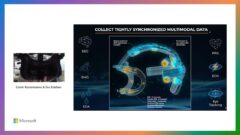
Galea: The Bridge Between Mixed Reality and Neurotechnology
- Eva Esteban,
- Conor Russomanno

Current and Future Application of BCIs
- Christoph Guger

Challenges in Evolving a Successful Database Product (SQL Server) to a Cloud Service (SQL Azure)
- Hanuma Kodavalla,
- Phil Bernstein

Improving text prediction accuracy using neurophysiology
- Sophia Mehdizadeh
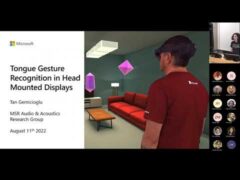
Tongue-Gesture Recognition in Head-Mounted Displays
- Tan Gemicioglu

DIABLo: a Deep Individual-Agnostic Binaural Localizer
- Shoken Kaneko
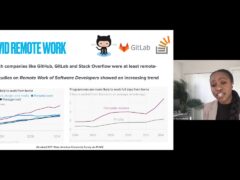
A Tale of Two Cities: Software Developers in Practice During the COVID-19 Pandemic
- Denae Ford Robinson

Recent Efforts Towards Efficient And Scalable Neural Waveform Coding

Geometry-constrained Beamforming Network for end-to-end Farfield Sound Source Separation
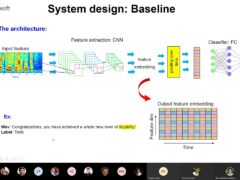
Audio-based Toxic Language Detection
- Midia Yousefi
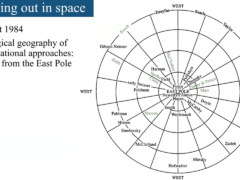
What Kind of Computation is Human Cognition? A Brief History of Thought (Episode 2/2)
- Paul Smolensky ,
- Sean Andrist
From SqueezeNet to SqueezeBERT: Developing Efficient Deep Neural Networks
- Sujeeth Bharadwaj
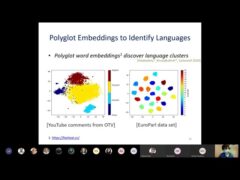
Hope Speech and Help Speech: Surfacing Positivity Amidst Hate
- Monojit Choudhury
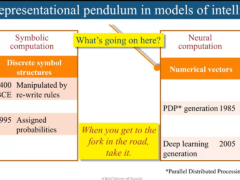
What Kind of Computation is Human Cognition? A Brief History of Thought (Episode 1/2)

An Ethical Crisis in Computing?
- Emre Kiciman ,
- Eric Horvitz

Towards Mainstream Brain-Computer Interfaces (BCIs)
- Hannes Gamper

Underestimating the challenge of cognitive disabilities (and digital literacy). Directions to explore for current, next, and next-next generation UIs
- Gregg Vanderheiden

'F' to 'A' on the N.Y. Regents Science Exams: An Overview of the Aristo Project
- Peter Clark
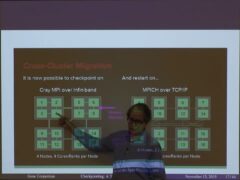
Checkpointing the Un-checkpointable: the Split-Process Approach for MPI and Formal Verification
- Gene Cooperman
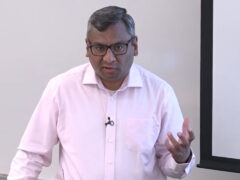
Learning Structured Models for Safe Robot Control
- Ashish Kapoor

Non-linear Invariants for Control-Command Systems
- Tahina Ramananandro

Distributed Entity Resolution for Computational Social Science
- Vivek Narasayya
- Follow on Twitter
- Like on Facebook
- Follow on LinkedIn
- Subscribe on Youtube
- Follow on Instagram
- Subscribe to our RSS feed
Share this page:
- Share on Twitter
- Share on Facebook
- Share on LinkedIn
- Share on Reddit

APA Formatting and Style (7th ed.) for Student Papers
- What's New in the 7th ed.?
- Principles of Plagiarism: An Overview
- Basic Paper Formatting
- Basic Paper Elements
- Punctuation, Capitalization, Abbreviations, Apostrophes, Numbers, Plurals
- Tables and Figures
- Powerpoint Presentations
- Reference Page Format
- Periodicals (Journals, Magazines, Newspapers)
- Books and Reference Works
- Webpage on a Website
- Discussion Post
- Company Information & SWOT Analyses
- Dissertations or Theses
- ChatGPT and other AI Large Language Models
- Online Images
- Online Video
- Computer Software and Mobile Apps
- Missing Information
- Two Authors
- Three or More Authors
- Group Authors
- Missing Author
- Chat GPT and other AI Large Language Models
- Secondary Sources
- Block Quotations
- Fillable Template and Sample Paper
- Government Documents and Legal Materials
- APA Style 7th ed. Tutorials
- Additional APA 7th Resources
- Grammarly - your writing assistant
- Writing Center - Writing Skills This link opens in a new window
- Brainfuse Online Tutoring
APA 7th ed. Fillable Word Template and Sample Paper
- APA 7th ed. Template Download this Word document, fill out the title page and get writing!
- Sample Paper APA 7th ed. Our APA sample paper shows you how to format the main parts of a basic research paper.
- APA 7th Sample Papers from Purdue Owl
- << Previous: Block Quotations
- Next: Government Documents and Legal Materials >>
- Last Updated: Apr 1, 2024 10:02 AM
- URL: https://national.libguides.com/apa_7th
What’s Included: Research Paper Template
If you’re preparing to write an academic research paper, our free research paper template is the perfect starting point. In the template, we cover every section step by step, with clear, straightforward explanations and examples .
The template’s structure is based on the tried and trusted best-practice format for formal academic research papers. The template structure reflects the overall research process, ensuring your paper will have a smooth, logical flow from chapter to chapter.
The research paper template covers the following core sections:
- The title page/cover page
- Abstract (sometimes also called the executive summary)
- Section 1: Introduction
- Section 2: Literature review
- Section 3: Methodology
- Section 4: Findings /results
- Section 5: Discussion
- Section 6: Conclusion
- Reference list
Each section is explained in plain, straightforward language , followed by an overview of the key elements that you need to cover within each section. We’ve also included links to free resources to help you understand how to write each section.
The cleanly formatted Google Doc can be downloaded as a fully editable MS Word Document (DOCX format), so you can use it as-is or convert it to LaTeX.
FAQs: Research Paper Template
What format is the template (doc, pdf, ppt, etc.).
The research paper template is provided as a Google Doc. You can download it in MS Word format or make a copy to your Google Drive. You’re also welcome to convert it to whatever format works best for you, such as LaTeX or PDF.
What types of research papers can this template be used for?
The template follows the standard best-practice structure for formal academic research papers, so it is suitable for the vast majority of degrees, particularly those within the sciences.
Some universities may have some additional requirements, but these are typically minor, with the core structure remaining the same. Therefore, it’s always a good idea to double-check your university’s requirements before you finalise your structure.
Is this template for an undergrad, Masters or PhD-level research paper?
This template can be used for a research paper at any level of study. It may be slight overkill for an undergraduate-level study, but it certainly won’t be missing anything.
How long should my research paper be?
This depends entirely on your university’s specific requirements, so it’s best to check with them. We include generic word count ranges for each section within the template, but these are purely indicative.
What about the research proposal?
If you’re still working on your research proposal, we’ve got a template for that here .
We’ve also got loads of proposal-related guides and videos over on the Grad Coach blog .
How do I write a literature review?
We have a wealth of free resources on the Grad Coach Blog that unpack how to write a literature review from scratch. You can check out the literature review section of the blog here.
How do I create a research methodology?
We have a wealth of free resources on the Grad Coach Blog that unpack research methodology, both qualitative and quantitative. You can check out the methodology section of the blog here.
Can I share this research paper template with my friends/colleagues?
Yes, you’re welcome to share this template. If you want to post about it on your blog or social media, all we ask is that you reference this page as your source.
Can Grad Coach help me with my research paper?
Within the template, you’ll find plain-language explanations of each section, which should give you a fair amount of guidance. However, you’re also welcome to consider our private coaching services .

Templates for every kind of writing
Make your pages pop with a customizable template for you to put your words into. everything from academic and research papers to work assignments to personal writing and journaling can benefit from starting your writing with a template. see which one gets the words flowing for you..

Write your way with a customizable template matched to your project
There are endless ways to write, to get ideas onto the page (or screen). No matter what kind of writing you're going to do, starting with a customizable writing template can help guide your work (or brainstorming). From resumes , and business plans , to school essays, journal writing, and other hobbies , there's a template for you to take advantage of. Dive into keeping a diary or meal planning. Keep a planner with pen and paper. Practice your penmanship—or your typing. However you like to do your writing, there's an easy-to-use, customizable template to help you get started.
Have a language expert improve your writing
Run a free plagiarism check in 10 minutes, generate accurate citations for free.
- Knowledge Base
- IEEE Paper Format | Template & Guidelines
IEEE Paper Format | Template & Guidelines
Published on August 24, 2022 by Jack Caulfield . Revised on April 6, 2023.
IEEE provides guidelines for formatting your paper. These guidelines must be followed when you’re submitting a manuscript for publication in an IEEE journal. Some of the key guidelines are:
- Formatting the text as two columns, in Times New Roman, 10 pt.
- Including a byline, an abstract , and a set of keywords at the start of the research paper
- Placing any figures, tables, and equations at the top or bottom of a column, not in the middle
- Following the appropriate heading styles for any headings you use
- Including a full list of IEEE references at the end
- Not including page numbers
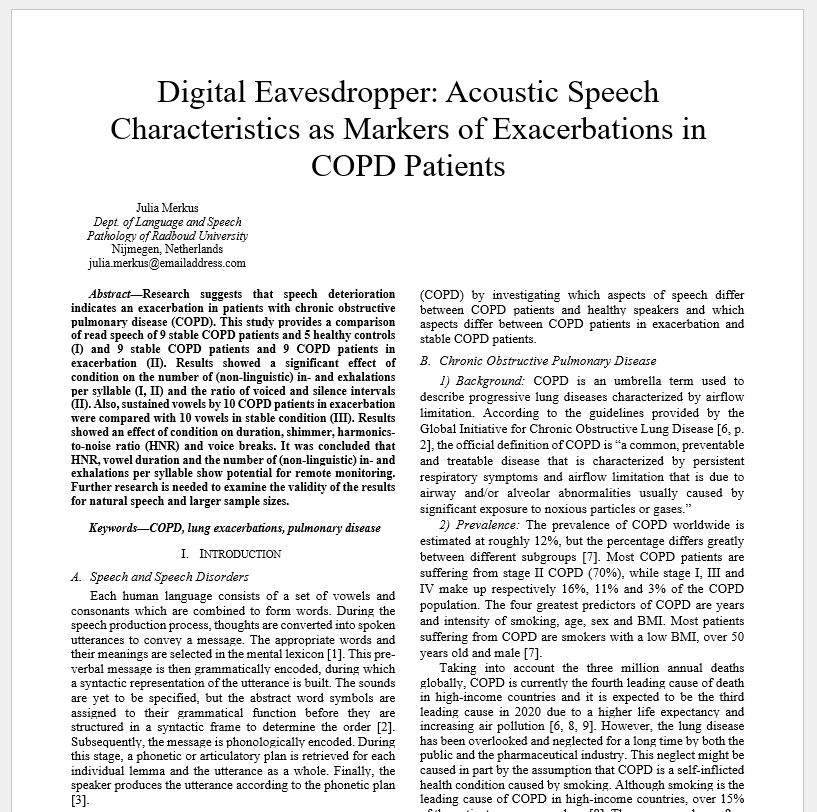
To learn more about the specifics of IEEE paper format, check out the free template below. Note that you may not need to follow these rules if you’ve only been told to use IEEE citation format for a student paper. But you do need to follow them to submit to IEEE publications.
Table of contents
Ieee format template, ieee heading styles, frequently asked questions about ieee.
The template below can be used to make sure that your paper follows IEEE format. It’s set up with custom Word styles for all the different parts of the text, with the right fonts and formatting and with further explanation of key points.
Make sure to remove all the explanatory text in the template when you insert your own.
Download IEEE paper format template
Prevent plagiarism. Run a free check.
IEEE recommends specific heading styles to distinguish the title and different levels of heading in your paper from each other. Styles for each of these are built into the template.
The paper title is written in 24 pt. Times New Roman, centered at the top of the first page. Other headings are all written in 10 pt. Times New Roman:
- Level 1 text headings begin with a roman numeral followed by a period. They are written in small caps, in title case, and centered.
- Level 2 text headings begin with a capital letter followed by a period. They are italicized, left-aligned, and written in title case.
- Level 3 text headings begin with a number followed by a closing parenthesis . They are italicized, written in sentence case, and indented like a regular paragraph. The text of the section follows the heading immediately, after a colon .
- Level 4 text headings begin with a lowercase letter followed by a closing parenthesis. They are italicized, written in sentence case, and indented slightly further than a normal paragraph. The text of the section follows the heading immediately, after a colon.
- Component headings are used for the different components of your paper outside of the main text, such as the acknowledgments and references. They are written in small caps, in title case, centered, and without any numbering.
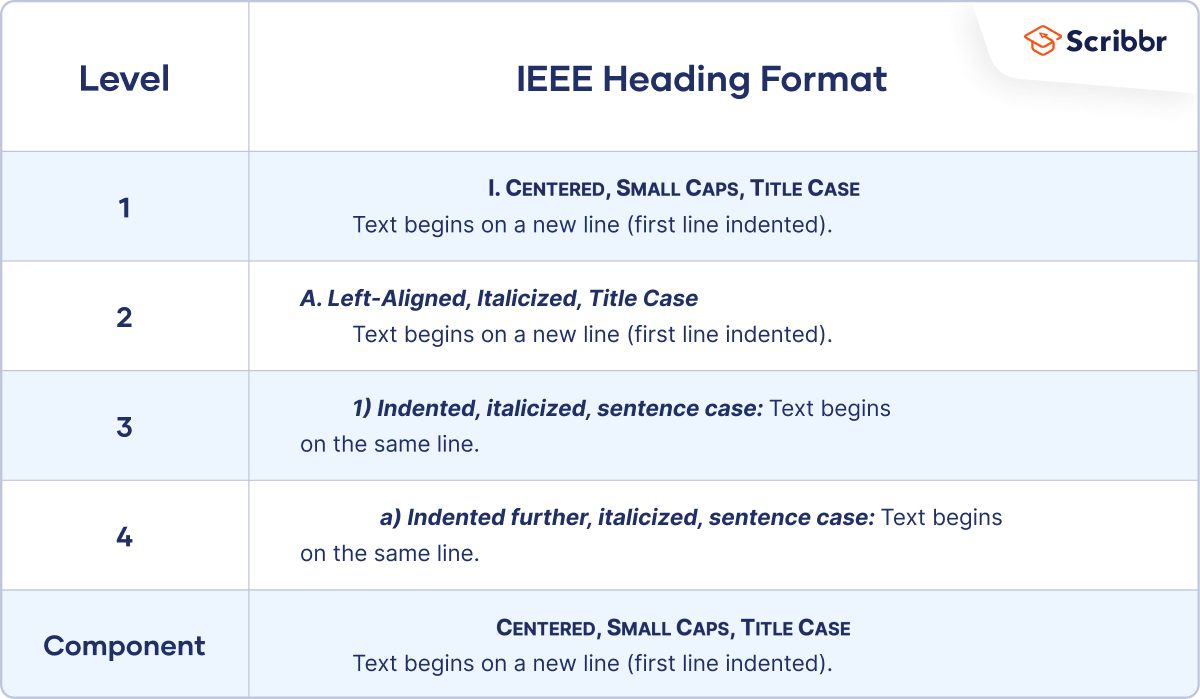
You should use 10 pt. Times New Roman font in your IEEE format paper .
For the paper title, 26 pt. Times New Roman is used. For some other paper elements like table footnotes, the font can be slightly smaller. All the correct stylings are available in our free IEEE format template .
No, page numbers are not included in an IEEE format paper . If you’re submitting to an IEEE publication, page numbers will be added in the final publication but aren’t needed in the manuscript.
IEEE paper format requires you to include an abstract summarizing the content of your paper. It appears at the start of the paper, right after you list your name and affiliation.
The abstract begins with the word “Abstract,” italicized and followed by an em dash. The abstract itself follows immediately on the same line. The entire section is written in bold font. For example: “ Abstract —This paper discusses … ”
You can find the correct format for your IEEE abstract and other parts of the paper in our free IEEE paper format template .
Cite this Scribbr article
If you want to cite this source, you can copy and paste the citation or click the “Cite this Scribbr article” button to automatically add the citation to our free Citation Generator.
Caulfield, J. (2023, April 06). IEEE Paper Format | Template & Guidelines. Scribbr. Retrieved April 11, 2024, from https://www.scribbr.com/ieee/ieee-paper-format/
Is this article helpful?

Jack Caulfield
Other students also liked, ieee reference page | format & examples, ieee in-text citation | guidelines & examples, ieee journal citation | guide with examples, "i thought ai proofreading was useless but..".
I've been using Scribbr for years now and I know it's a service that won't disappoint. It does a good job spotting mistakes”

IMAGES
VIDEO
COMMENTS
Your papers and reports will look as professional and well put together as they sound when you compose them using customizable Word templates.Whether you're writing a research paper for your university course or putting together a high priority presentation, designer-created templates are here to help you get started.First impressions are important, even for papers, and layout can make or ...
Choose an APA template or MLA template, or other college-related template and open it in Word for the web to make it yours. You'll be on the Templates for Word page. In the list of categories, click College Tools. As you work on the paper, you'll probably want to rename it and edit the header with a running head of your own.
This talk offers seven simple, concrete suggestions for how to improve your research papers. You may also find my talks on how to write a great research proposal and how to give a great research talk useful. Powerpoint slides of the talk: PDF PPT (you should feel free to repurpose these slides for your own use as long as you acknowledge ...
Finding and citing sources. Get a head start on collecting sources and ideas for a big paper by searching key words in Researcher in the References tab of your document. Researcher uses Bing to search the web and deliver high-quality research sources to the side of your page. Search for people, places, or ideas and then sort by journal articles and websites.
Downloading a free template does some of the heavy lifting, automating some formatting. Using the MLA template. To get a correctly formatted paper, Go to FILE > New and search for "APA" or "MLA" depending on what style you want. Many things will format automatically, but make sure you check the easy gotchas, like spelling errors (words ...
The formatting of a research paper is different depending on which style guide you're following. In addition to citations, APA, MLA, and Chicago provide format guidelines for things like font choices, page layout, format of headings and the format of the reference page. Scribbr offers free Microsoft Word templates for the most common formats.
On the Reference tab, in the Reference group, choose Researcher. In the search box, type a keyword for the topic you are researching and press Enter. The Results pane shows a list of sources you can use in your document. Choose a topic in the Results pane to explore in detail. Tap the plus sign on the upper right hand corner of on any result to ...
Format Font to Times New Roman, Size 12. Alt+A to select all font, Ctrl+D to open font dialog box, type Times, tab twice to get to size box, type 12, then Enter to close box and header. Highlight all text if needed, then on the Home tab, in the Font section, select Times New Roman, size 12.
Choose an APA template or MLA template, or other college-related template and open it in Word for the web to make it yours. You'll be on the Templates for Word page. In the list of categories, click College Tools. As you work on the paper, you'll probably want to rename it and edit the header with a running head of your own.
We also offer these sample papers in Microsoft Word (.docx) format with the annotations as comments to the text. Student sample paper with annotations as comments (DOCX, 42KB) Professional sample paper with annotations as comments (DOCX, 103KB) Finally, we offer these sample papers in Microsoft Word (.docx) format without the annotations.
How to Write a Great Research Paper. Writing papers and giving talks are key skills for any researcher, but they aren't easy. In this pair of presentations, I'll describe simple guidelines that I follow for writing papers and giving talks, which I think may be useful to you too. I don't have all the answers—far from it—and I hope that ...
Times New Roman 12. 1″ page margins. Double line spacing. ½" indent for new paragraphs. Title case capitalization for headings. For accurate citations, you can use our free MLA Citation Generator. Download Word template Open Google Docs template. (To use the Google Docs template, copy the file to your Drive by clicking on 'file ...
Body (section 2.11) Align the text to the left with a 1/2-inch left indent on the first line; Double-space; As long as there is no Abstract, at the top of the first page, type the title of the paper, centered, in bold, and in Sentence Case Capitalization; Usually, include sections like these: introduction, literature review or background, discussion, and conclusion -- but the specific ...
Select Reference > Researcher. In the search box, type a keyword for the topic you're researching, and press Enter. Choose a topic in the Results pane. Or, select the plus sign in the upper right hand corner of on any result to begin an outline, add the result as a topic heading, and save a link to the result in a comment. Explore the text in ...
Research paper format is an essential aspect of academic writing that plays a crucial role in the communication of research findings.The format of a research paper depends on various factors such as the discipline, style guide, and purpose of the research. It includes guidelines for the structure, citation style, referencing, and other elements of the paper that contribute to its overall ...
The talk presents the new book "Creating Research and Scientific Documents Using Microsoft Word" by Alexander Mamishev and Murray Sargent. The methods discussed in the book are designed for academic or industry professionals who need to produce complex, high-quality technical documents, such as research papers, grant proposals, books, or doctoral dissertations. The central topics that […]
APA 7th ed. Fillable Word Template and Sample Paper. APA 7th ed. Template. Download this Word document, fill out the title page and get writing! Sample Paper APA 7th ed. Our APA sample paper shows you how to format the main parts of a basic research paper. APA 7th Sample Papers from Purdue Owl << Previous: Block Quotations; Next: ...
If you're preparing to write an academic research paper, our free research paper template is the perfect starting point. In the template, we cover every section step by step, with clear, straightforward explanations and examples.. The template's structure is based on the tried and trusted best-practice format for formal academic research papers. The template structure reflects the overall ...
Templates for every kind of writing. Make your pages pop with a customizable template for you to put your words into. Everything from academic and research papers to work assignments to personal writing and journaling can benefit from starting your writing with a template. See which one gets the words flowing for you. Category.
Link to IEEE template: https://www.ieee.org/conferences/publishing/templates.htmlLink to A4 size Microsoft Word IEEE template: https://www.ieee.org/content/d...
Education. 30 Editable Research Paper Templates (MLA Formats) February 23, 2021 6 Mins Read. A research paper template is a document that contains research questions, variable interpolation, thesis, methodology, and results evaluation. To create an effective research paper, make sure that everything you present comes from reliable sources.
IEEE provides guidelines for formatting your paper. These guidelines must be followed when you're submitting a manuscript for publication in an IEEE journal. Some of the key guidelines are: Formatting the text as two columns, in Times New Roman, 10 pt. Including a byline, an abstract, and a set of keywords at the start of the research paper.
The purpose of a conference template is to provide a consistent format for papers appearing in the conference proceedings. IEEE strongly encourages use of the conference manuscript templates provided below. IEEE conference templates contain guidance text for composing and formatting conference papers. Please ensure that all guidance text is ...